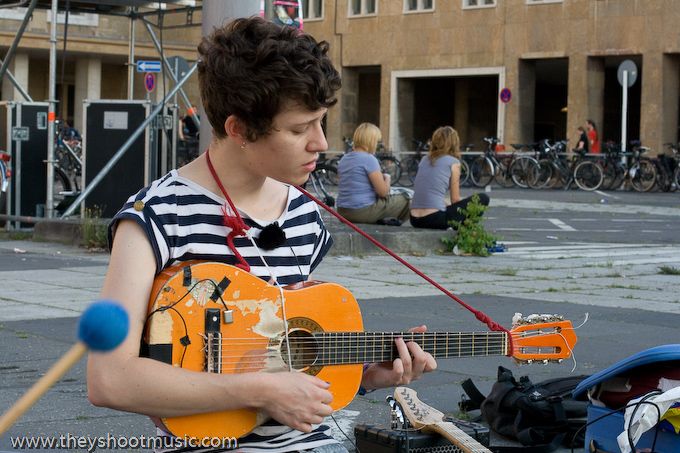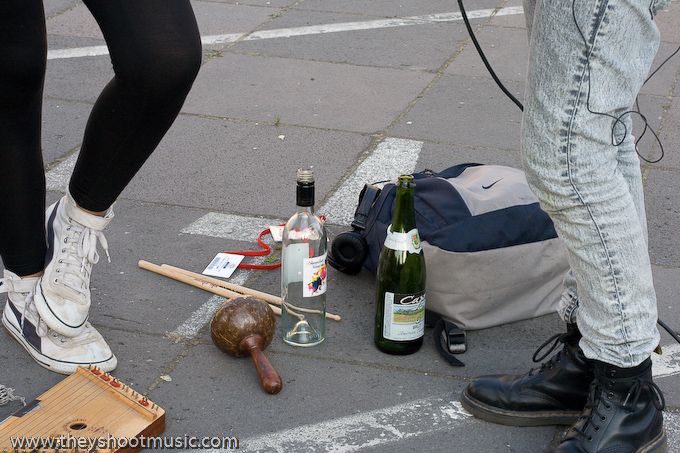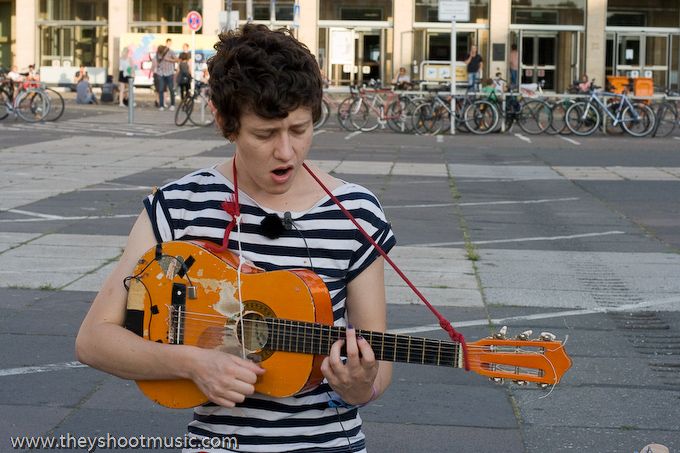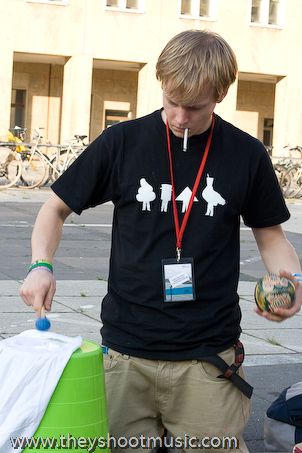Micachu and The Shapes
Flughafen Tempelhof, 2009
We catch Micachu and The Shapes right when they arrive at the airport-venue of the Berlin Festival. There is no need to get rid of their luggage, they say, so after drummer Mark found a suitable lurid green dustbin to beat on, we head fully packed to the bicycle-lined forecourt of disused Tempelhof airport. The festival gates have already opened and people keep flocking to the entrance, while Micachu and The Shapes set up some of their home made instruments in the middle of the scene and play their album’s final song “Guts” and the hidden track “Hardcore”. The East-London based band around 22-year-old, classically trained songwriter Mica Levi has created some respectable myspace-buzz since they have started in 2008. Micachu’s distinctive style – unconventional harmonies, improvised percussion and experimental song structures – attracted the likes of Matthew Herbert, who produced their first record “Jewellery”, and Björk, who is said to be a fan since the early days.
- Camera
- Michael Luger
- Sound Recording
- Maria Wachlin
- Christian Frefel
- Post production
- Michael Luger
- Photography
- Sarah Brugner
- Artist
- Micachu and The Shapes








Flughafen Tempelhof
“Guten Flug!”, says the guy in the entrance hall of Tempelhof Airport after handing out the tickets. Indeed no one of the young fashionables in here is going to lift-off in its true sense. They are here for the Berlin Festival, which is one of the first major events to take place at the Tempelhof Airport since its closure in October 2008. But apart from the Berlin Festival in August and the Bread & Butter fashion tradeshow in July, no permanent plans have yet been implemented. The quite centrally located Tempelhof Airport was one of Europe’s three iconic pre-World-War-II airports (with the old Paris – Le Bourget Airport and London’s now-defunct Croydon Airport). Constructions started in 1927. The old airport terminal has already been heavily used, when in the 1930s, as part of Nazi architect Albert Speer’s plan for the reconstruction of Berlin, the old terminal was replaced with a new one. The airport halls and neighbouring buildings, still known as the largest building entities worldwide, should play an important role in Adolf Hitler’s “world capital” Germania. Because of World War II, those construction plans have never been completed. After the war Tempelhof Airport was turned over to the United States Army as part of the American occupation zone of Berlin. As the Soviets occupied further parts of the city in June 1948, Tempelhof Airport remains the only access route for Western Powers into Berlin. For eleven months West Berlin’s residents have been sustained with airlift transports that landed at Tempelhof. The history-charged airport, even now it is disused, stays exceptional and momentous. British architect Sir Norman Foster has described Tempelhof Airport with its large, canopy-style roof and with its terminal façade of shell limestone as “the mother of all airports”.